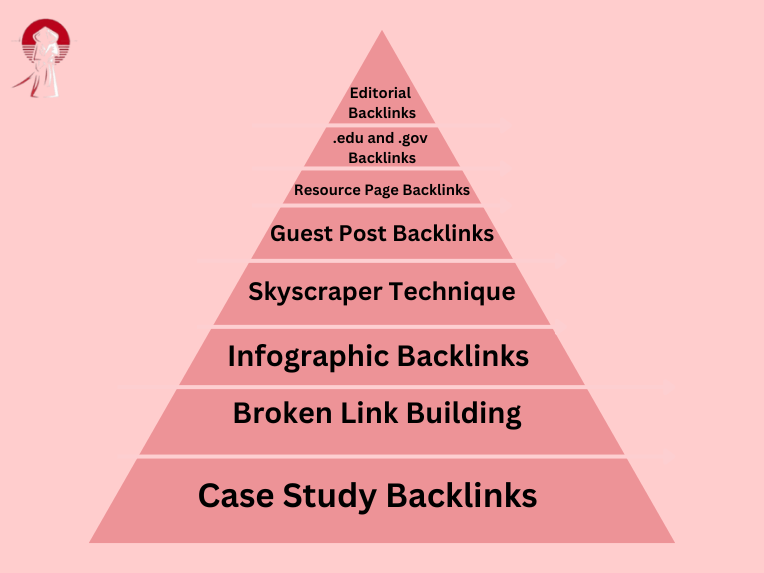Hey there! So, you’re learning about SEO and you’ve heard about backlinks. A backlink is, in simple terms a link from one website to another. It is considered as a vote of confidence. This vote raises the value of your material in the eyes of search engines like Google, which can improve the ranks of your website.
Why Backlinks Matter
Alright, so why should you care about backlinks? They provide as a kind of confirmation, which is why they are essential to SEO. Credible websites connect to your work and say, “Hey, this stuff is good!” When search engines see this, they begin to regard your website as reliable. Generally speaking, having more high-quality backlinks increases your site’s exposure and search engine ranks.
Backlink Types in SEO
Now let’s talk about the many Backlink Types in SEO you may come across. Knowing the advantages and disadvantages of each kind will help you develop an SEO strategy that works better.
Dofollow Backlinks
What are Dofollow Backlinks?
Backlinks that are dofollow are the most prevalent kind. A website that connects to yours with the do follow attribute gives part of its authority (also known as “link juice”) to your website. This improves the SEO of your website.
Benefits of Dofollow Backlinks
In the realm of SEO, dofollow backlinks are quite valuable. They aid in raising the authority and ranks of your website. Additionally, they increase referral traffic to your website from the site that links to it, which is beneficial for visibility and expanding your audience.
Nofollow Backlinks
What are Nofollow Backlinks?
Nofollow backlinks, on the other hand, have a different role. They don’t pass on link juice. This means they don’t directly boost your site’s SEO. Instead, they’re used to prevent spam and to give the site owner a way to control which links pass on authority.
When to Use Nofollow Backlinks
Nofollow links are still valuable, though. They can increase website traffic and contribute to the diversification of your backlink profile. Furthermore, they are frequently utilized in contexts where do-follow links might not be as acceptable, such as social media, forum postings, and blog comments.
Editorial Backlinks
Characteristics of Editorial Links
The finest of all backlinks are editorial backlinks. These are links originating from a website that references or uses your material as a resource. Instead of requiring any direct effort on your part, they are earned by the caliber and applicability of your material.
How to Acquire Editorial Backlinks
Getting editorial backlinks often involves creating exceptional content that others naturally want to link. Focus on producing high-quality, informative, and engaging content, and then reach out to industry influencers and bloggers to let them know about your work.
Guest Post Backlinks
What is Guest Posting?
Guest posting involves writing an article for another website in exchange for a backlink to your site. It’s a win-win situation for both of them: the host site gets fresh content, and you get a valuable backlink.
How to Write a Successful Guest Post
To nail a guest post, you need to pitch ideas that are relevant to the website admin or owner site’s audience. Write high-quality content that provides value and includes a natural, relevant backlink to your site. Make sure to follow any guest post guidelines provided by the host site.
Profile Backlinks
Understanding Profile Links
Links originating from the creation of a profile on many websites, including social networks, forums, and business directories, are known as profile backlinks. Although these links may not always be followed, they are nevertheless beneficial in terms of traffic and visibility.
Pros and Cons of Profile Links
Profile backlinks can be useful for driving traffic and creating a diversified backlink profile. However, they often carry less authority compared to editorial or guest post backlinks. They’re best used as part of a broader SEO strategy.
Forum Backlinks
Engaging in Forums
Participating in forums and leaving links in your posts can be a way to get backlinks. The key is to provide valuable contributions and avoid spammy practices. Your links should be relevant and add value to the discussion.
How to Use Forum Backlinks Effectively
When using forums for backlinks, make sure your posts are thoughtful and relevant. Avoid excessive self-promotion; instead, aim to be a helpful participant in the community.
Blog Comment Backlinks
The Value of Blog Comments
Commenting on blogs can also provide backlinks, though these are often no-follows. They’re still valuable for engaging with other readers and driving traffic.
Best Practices for Commenting
Leave insightful and relevant comments that contribute to the conversation. Avoid spammy or generic comments, as these are less likely to be approved and can harm your reputation.
Directory Backlinks
Using Online Directories
Directory backlinks come from listing your site in online directories. These directories can range from general business listings to niche-specific directories.
How to Choose the Right Directories
When choosing directories, look for those that are reputable and relevant to your industry. Quality matters more than quantity, so focus on directories that are well-regarded and offer genuine traffic opportunities.
Social Media Backlinks
Social Signals and SEO
These backlinks are links shared through social media platforms. While these links are typically nofollow, they can drive significant traffic and signal to search engines that your content is engaging.
Maximizing Social Media Backlinks
To get the most out of social media backlinks, regularly share your content and engage with your audience. Use social media strategically to promote your content and build relationships with influencers.
.edu and .gov Backlinks
Why .edu and .gov Links are Valuable
Backlinks from .edu and .gov domains are highly valued because these domains are typically associated with authoritative institutions. They are seen as highly trustworthy and can pass significant link juice.
Strategies to Obtain .edu and .gov Links
To earn .edu or .gov backlinks, consider creating valuable resources or conducting research that these institutions might reference. Additionally, building relationships with educational and government institutions can open up opportunities for backlinks.
Resource Page Backlinks
What is a Resource Page?
Resource pages are dedicated pages on websites that list helpful resources or links. Securing a backlink from these pages can be highly beneficial, especially if the page is relevant to your industry.
How to Get Featured on Resource Pages
Reach out to website owners with a well-crafted pitch about how your content can be a valuable addition to their resource page. Ensure that your content is relevant and high-quality.
Broken Link Building
The Concept of Broken Link Building
Broken link building involves finding broken (404) links on other websites and suggesting your content as a replacement. It’s a clever way to gain backlinks while helping website owners fix issues on their sites.
How to Implement Broken Link Strategies
Start by identifying relevant sites in your niche that have broken links. Tools like Screaming Frog or Ahrefs can help with this. Once you find a broken link, contact the site owner, let them know about the issue, and suggest your content as a suitable replacement. It’s a win-win situation.
Skyscraper Technique
What is the Skyscraper Technique?
The Skyscraper Technique involves finding high-performing content in your niche, creating something even better, and then reaching out to sites that link to the original content. The idea is to “build a skyscraper” by improving upon what’s already out there.
Steps to Execute the Skyscraper Technique
- Research: Find popular content in your niche with lots of backlinks.
- Create Better Content: Make your content more comprehensive, up-to-date, and engaging.
- Outreach: Contact websites that link to the original content and suggest your improved version as a replacement.
Infographic Backlinks
Creating Shareable Infographics
Infographics are visually appealing and easy to share, which makes them a great tool for acquiring backlinks. Create infographics that provide valuable insights or data in your industry.
How to Use Infographics for Backlinks
Promote your infographics on your website and through social media. Reach out to industry bloggers and websites, offering them your infographic for use in their content. Many will be happy to link back to you as a source.
Case Study Backlinks
How Case Studies Boost SEO
Case studies offer in-depth analyses of specific scenarios or results, providing valuable insights to readers. They can attract backlinks from other sites interested in your findings and success stories.
Crafting a Compelling Case Study
To create an effective case study, ensure it’s well-researched and provides actionable insights. Include data, visuals, and clear takeaways. Promote your case study through outreach and by showcasing it on your website.
Conclusion
In the vast world of SEO, understanding the different Backlink Types in SEO and how to effectively use them can set you apart from the competition. From dofollow and nofollow links to guest posts and infographics, each type plays a unique role in boosting your site’s authority and visibility. By leveraging these various backlink types, you can build a diverse and robust link profile that enhances your SEO efforts. Remember, quality over quantity is key—focus on obtaining high-value backlinks that genuinely contribute to your site’s credibility.
FAQs
- What are the best Backlink Types in SEO for beginners?
For beginners, starting with guest post backlinks, profile links, and social media backlinks can be effective. These types are easier to acquire and still offer valuable SEO benefits. - How do backlinks impact search engine rankings?
Backlinks act as endorsements from other sites. High-quality backlinks from reputable sources signal to search engines that your content is valuable, leading to improved search rankings. - Can I get penalized for using low-quality backlinks?
Yes, low-quality backlinks or engaging in manipulative link-building practices can lead to penalties from search engines. Focus on obtaining high-quality, relevant links to avoid potential issues. - How often should I update my backlink strategy?
Regularly review and update your backlink strategy to stay aligned with SEO best practices and algorithm changes. Aim for a consistent approach to building quality backlinks over time. - Are there any tools to help analyze backlinks?
Yes, several tools can help analyze backlinks, including Ahrefs, Moz, and SEMrush. These tools offer insights into your backlink profile, help identify high-quality links, and track your SEO progress.

